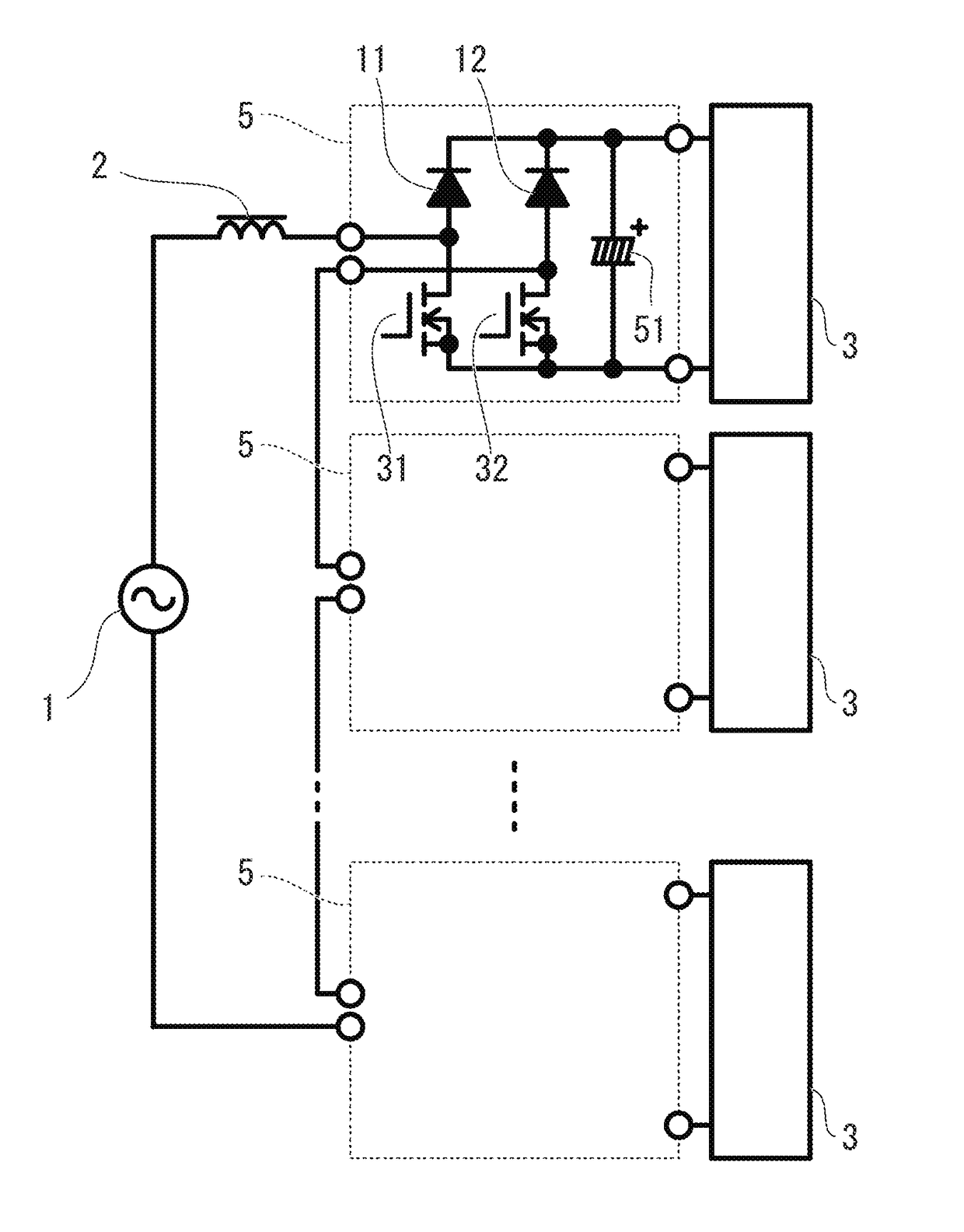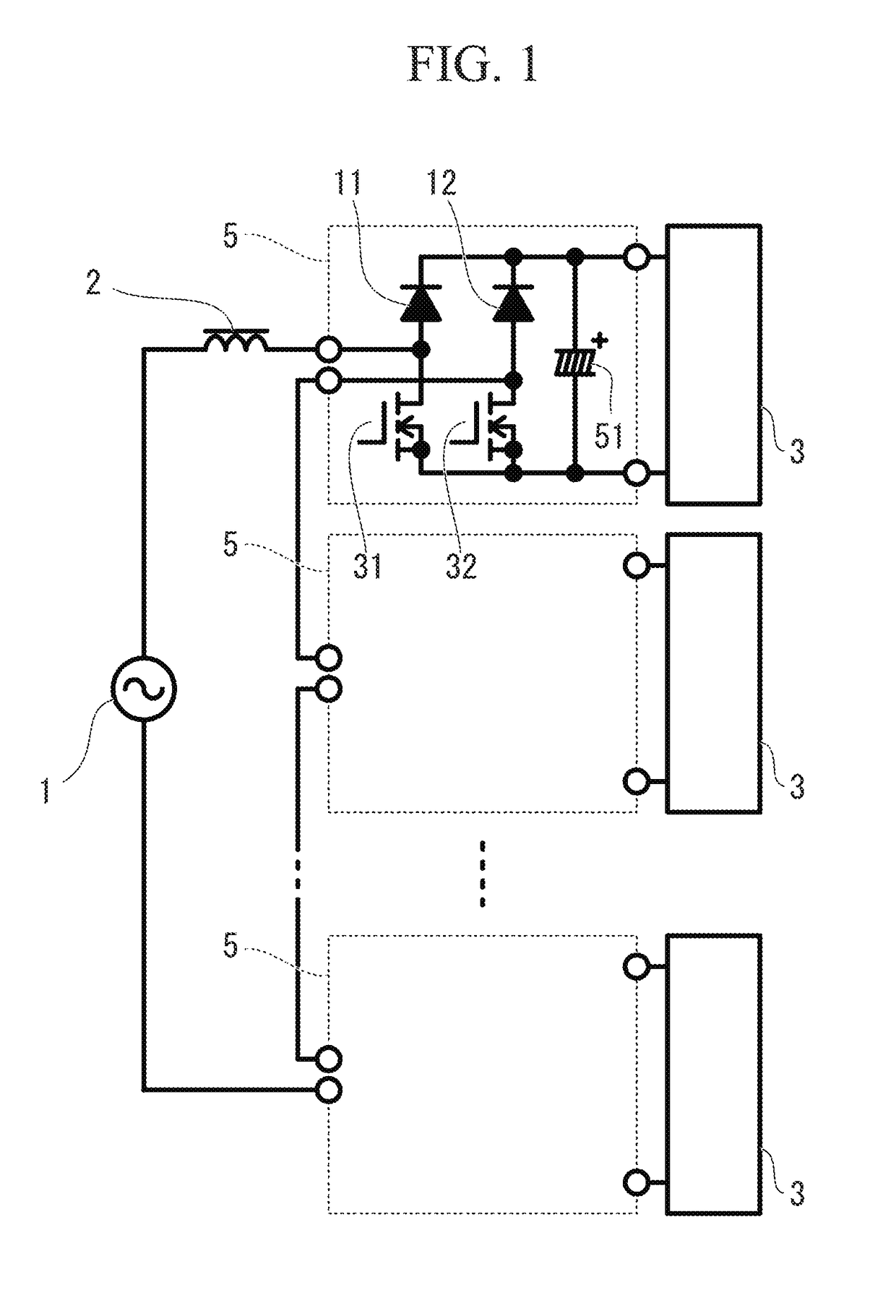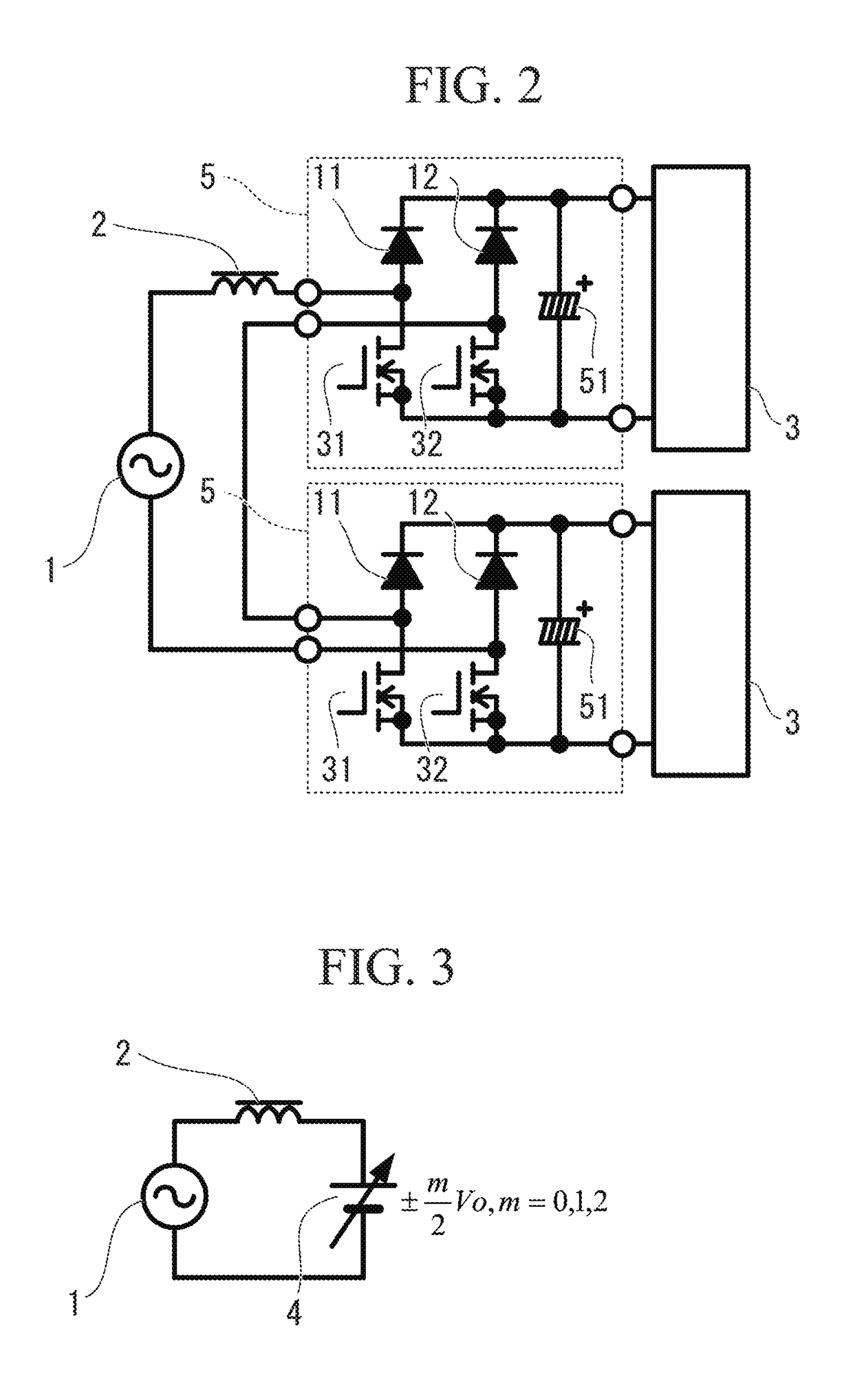Power factor improving converter, and power supply device including power factor improving converter
a converter and power factor technology, applied in the direction of electric variable regulation, process and machine control, instruments, etc., can solve the problems of increasing switching loss, increasing choke iron loss, increasing choke copper loss, etc., to reduce voltage applied, reduce choke, and reduce the effect of chok
- Summary
- Abstract
- Description
- Claims
- Application Information
AI Technical Summary
Benefits of technology
Problems solved by technology
Method used
Image
Examples
example 1
Effect of Example 1
[0069]By the above action, it is possible to, by use of the circuit of the present invention, miniaturize the choke and also miniaturize the noise filter.
Example 2
Configuration of Example 2
[0070]FIG. 10 shows an example of the present invention where the number of levels n is 4. This converter includes the AC power source 1, the choke 2, the three circuit blocks 5, and the loads 3 each connected to the output terminals of one of the circuit blocks 5.
[0071]Each circuit block 5 includes the first series circuit including the diode 11 and the MOSFET 31, the second series circuit including the diode 12 and the MOSFET 32, and the capacitor 51. The drain of the MOSFET 31 and the anode of the diode 11 are connected, and the drain of the MOSFET 32 and the anode of the diode 12 are connected. One input terminal is connected to the connecting point of the diode 11 and the MOSFET 31, and the other input terminal is connected to the connecting point of the diode 12 and the MO...
example 2
Effect of Example 2
[0082]By the above action, it is possible to, by use of the circuit of the present invention, miniaturize the choke and also miniaturize the noise filter.
Example 3
Configuration of Example 3
[0083]In Example 3, as the loads for the respective circuit blocks 5 of the circuit shown in FIG. 2, primary sides of full-bridge converters 6 (hereinafter referred to as “converters 6”) are respectively connected, as in a circuit shown in FIG. 12, and outputs of the respective converters 6 are connected to each other and to the load 3.
[0084]In each converter 6, inputs of a bridge circuit including a MOSFET 33, a MOSFET 34, a MOSFET 35, and a MOSFET 36 are connected to the output terminals of each circuit block 5. Outputs of this bridge circuit are connected to a primary winding of a transformer 61. A secondary winding of the transformer 61 is connected to a rectifying circuit including a diode 13, a diode 14, a diode 15, and a diode 16 which are bridged. Outputs of the rectifyi...
example 3
Effect of Example 3
[0087]Thus, the outputs of the respective converters 6 are connected with each other, thereby realizing, as a whole, a single-input single-output isolated converter with the power factor improving function.
[0088]Additionally, each converter 6 is driven while shifting the phases of each converter 6, thereby enabling a reduction in ripple current of the capacitor 52, and thus enabling the miniaturization of the capacitor 52.
[0089]Here, although the example of the full-bridge converter has been taken in the Example 3, a circuit type of the converter 6 is not limited thereto as long as the converter 6 is an isolated converter, thereby still achieving the same effect that, as a whole, a single-input single-output isolated converter with the power factor improving function can be realized by connecting the outputs of the respective converters 6.
[0090]Additionally, although the example of the parallel connection has been taken as the method of connecting the outputs of t...
PUM
 Login to View More
Login to View More Abstract
Description
Claims
Application Information
 Login to View More
Login to View More - R&D
- Intellectual Property
- Life Sciences
- Materials
- Tech Scout
- Unparalleled Data Quality
- Higher Quality Content
- 60% Fewer Hallucinations
Browse by: Latest US Patents, China's latest patents, Technical Efficacy Thesaurus, Application Domain, Technology Topic, Popular Technical Reports.
© 2025 PatSnap. All rights reserved.Legal|Privacy policy|Modern Slavery Act Transparency Statement|Sitemap|About US| Contact US: help@patsnap.com



